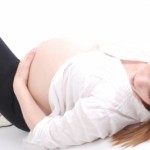Close birth spacing linked to autism risk
A study of half a million children in California shows that close birth spacing could increase the risk of autism for a second-born kid. Researchers found that kids born within two years apart were more likely to be autistic than children who had gaps of at least three years.
The findings of the study, published Monday in the journal Pediatrics, were the same regardless of the parents' ages, suggesting that the age of conceiving and giving birth may play little role in the development of autism.
"That was pretty shocking to us, to be honest," said study author Peter Bearman of Columbia University in New York. Bearman and his team considered many other factors but it was birth spacing which stood out. "No matter what we did, whether we were looking at autism severity, looking at age, or looking at all the various dimensions we could think of, we couldn't get rid of this finding," Bearman said. The researchers said more studies are needed to validate the findings of their study.
The increasing number of unplanned pregnancies and women who are opting to delay childbirth are driving the growth of closely spaced births, which rose to 18 percent of all births in the U.S. in 2002 from 11 percent in 1995 according to government figures.
Researchers theorize that developmental problems can occur if two siblings are born less than two years apart. A lack of folate may also be the culprit. Mothers who do not experience ample birth spacing may not have the required time to fully restore folate levels for the next baby. The deficiency of the substance has previously been tied to prematurity and low birth rates.
